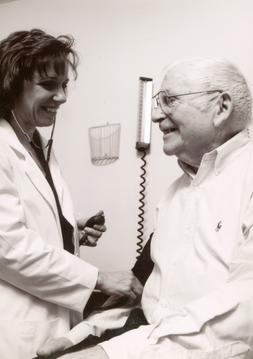
Patients want to know why they can’t get a return call from their doctor’s office – here are six reasons why the calls have increased and physician offices are having trouble meeting the needs of their patients.
- Medication questions and requests for a prescriptions change. The average number of retail prescriptions per capita increased from 10.1 in 1999 to 12.6 in 2009. (Kaiser Family Foundation calculations using data from IMS Health, http://www.imshealth.com.) Because it is not easy to access prescription cost by payer in the exam room, medical practices get lots of callbacks from patients asking to change their prescriptions once they arrive at the pharmacy and find out how much the prescription costs. Related issue: Many national-chain pharmacies have electronic systems that automatically request a new prescription when the patient is out of refills. Also related: Patients calling to ask for additional medication samples.
- Patients are delaying coming to the physician’s office by calling the practice with questions. Patients want to forestall paying their co-pay or their high-deductible by getting their care questions answered without coming to the doctor’s office.
- Patients call back with questions about what they heard or didn’t hear in the exam room. They may not remember what the physician told them, they may not have understood the medical jargon, or they may have a hearing problem and were not comfortable asking the physician to repeat something.
- Impatience: we live in an instant gratification world and patient expectations are not aligned with what physician offices can realistically provide.
- Some patients will not leave voice mail messages and will call back multiple times until they get a live human being or will punch in options until they find someone to answer the phone.
- Physician offices are often understaffed. Physicians find it untenable to add more staff to do more tasks for less money or no money at all.
And here are some possible solutions:
- Have formularies for all major health plans on hand in the exam room. These could be paper lists, or electronic lists for the tablet or smartphone. (Note: Epocrates currently has a deal with Walgreen’s to support their discount program on the smartphone.) Don’t underestimate the patient satisfaction and reduction in callbacks for sending the patient out of the exam room with the right prescription. Automatic refills are not an appropriate function of pharmacies. Physicians should provide samples (check the formulary!) and a prescription to get filled if the samples do the job. If a patient can’t afford the brand name prescription, a prescription assistance program is the next step.
- Patients need to be advised appropriately when they need to see the physician and when they don’t. Good triage nurses can be worth their weight in gold, but you can hold the costs down by hiring a triage nurse or several to work from their homes taking calls from your patients. The nurse will need to have access to your practice management system to schedule appointments and to document the conversation if the patient is given advice.
- Provide patients with different modes of assimilating health information. Some patients are recording office visits via voice or video and one of the goals of meaningful use is providing patients with an office visit summary when they exit the practice. Websites should be loaded with educational information that physicians can “prescribe” to their patients. Some physicians help to cut down on return calls and improve understanding by asking the patient how they’ll describe the visit to a family member.
- Give patients (on the web, in the practice, on your on-hold messages) realistic timelines for callbacks and make it so.
- Yes, some patients will game the system to get their needs met ahead of others. Ask them to adhere to the practice guidelines. There will always be some cheaters, but most patients will respect you if you respond to them when you said you would.
- The only answer to understaffing is technology. Use a patient portal to allow patients to request refills, schedule appointments and chat with billing staff or nurses. Replace paper charts with EMR. Use efaxing to eliminate paper faxes. Use the cloud to store information and collaborate.
Image via Wikipedia

